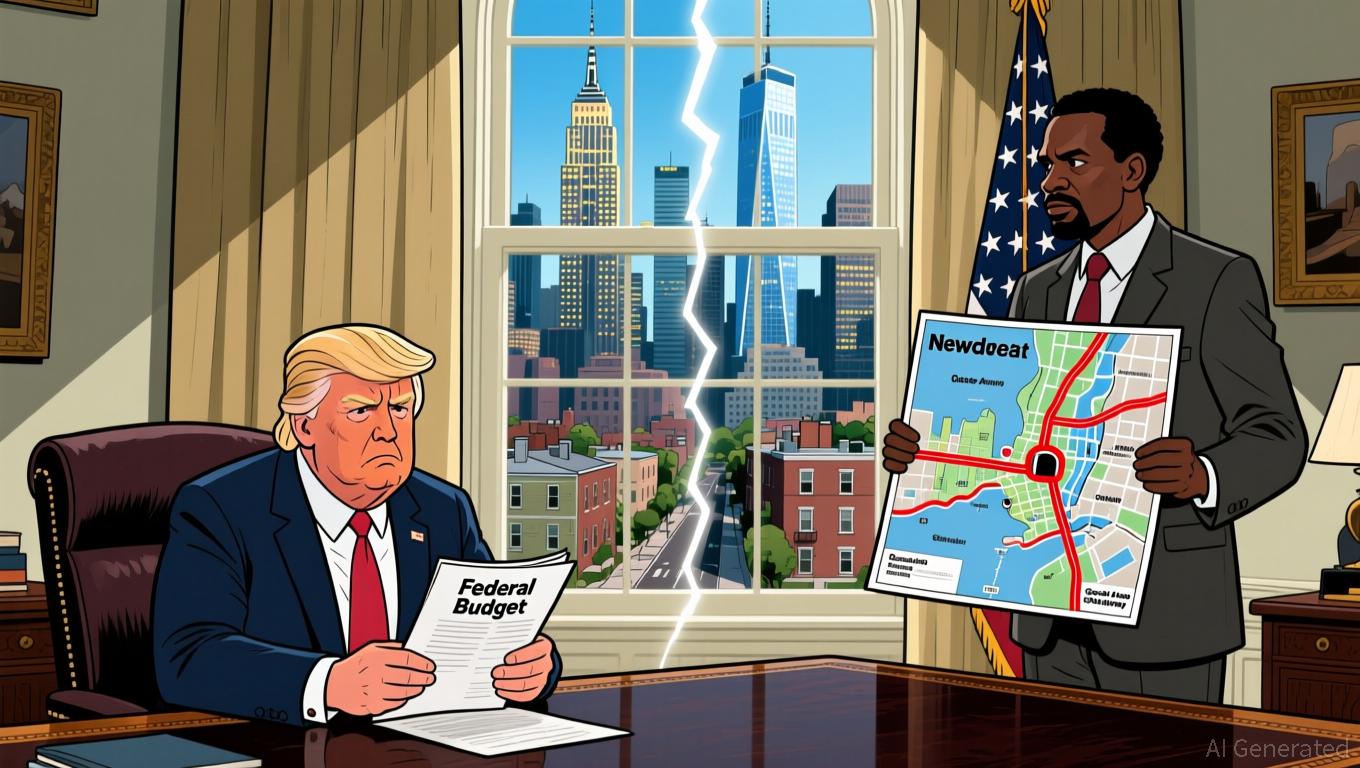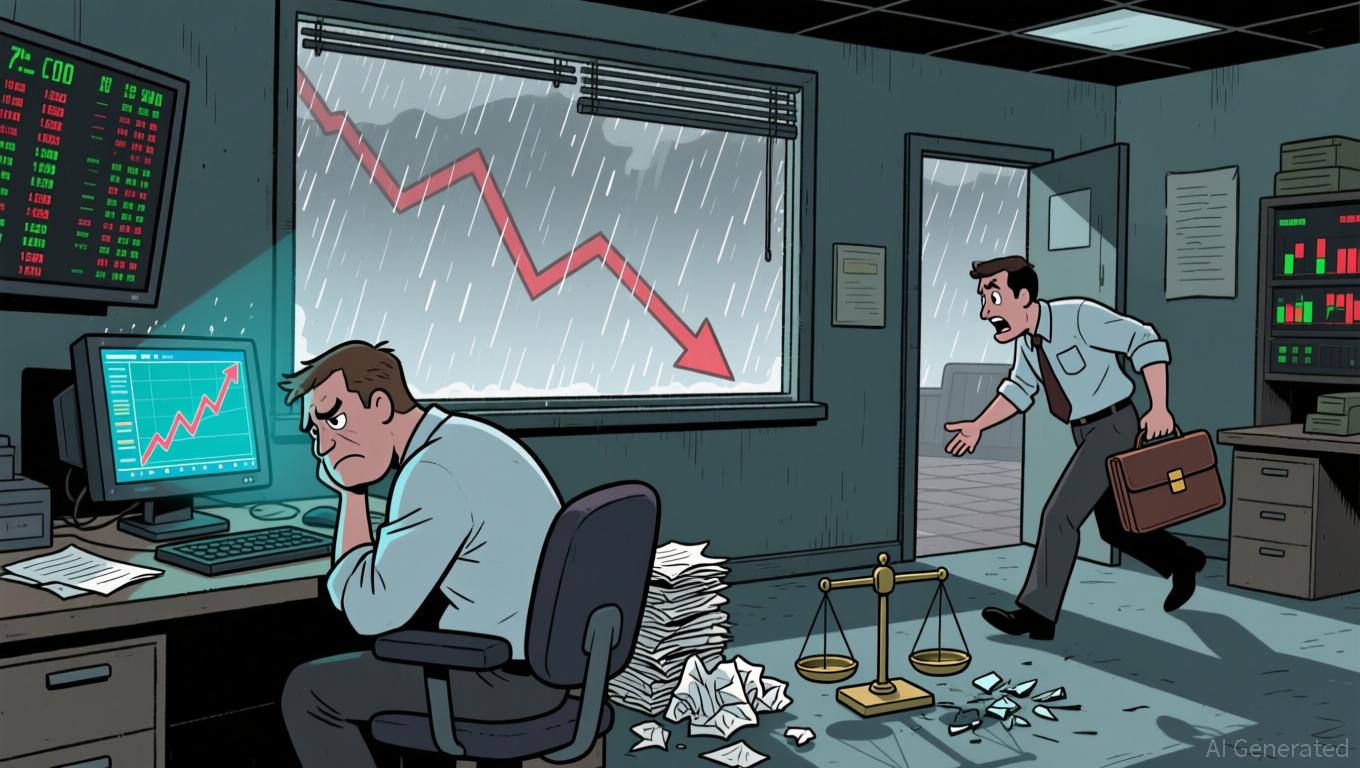Bitcoin Updates Today: The Future of Bitcoin in 2026 Hinges on Federal Reserve's Actions on Inflation
- Bitcoin's 2026 recovery depends on Fed inflation policy linked to CPI, PPI, and PCE metrics. - Persistent CPI/PCE inflation above 2% delays rate cuts, increasing Bitcoin's opportunity cost as non-yielding asset. - PPI input cost trends influence manufacturing pricing, prolonging inflation risks for Bitcoin's bearish environment. - PCE's alignment with consumer behavior shifts could accelerate Fed rate cuts, boosting Bitcoin's appeal as monetary easing hedge. - Housing/energy inflation volatility and Fed
Bitcoin's recent price volatility has led to a pressing question: Is a recovery on the horizon for the cryptocurrency? More analysts and investors are now relying on established economic signals—especially inflation measures like the Consumer Price Index (CPI), Producer Price Index (PPI), and Personal Consumption Expenditures (PCE) price index—to
The CPI, the most commonly cited inflation gauge, tracks shifts in the average prices paid by households for goods and services
The PPI, which measures price changes at the production stage, provides additional perspective

Looking beyond headline numbers, inflation trends in specific sectors are also important. For example, housing and energy prices—which together account for 55.4% of the CPI—remain persistently high
Investors should also pay attention to how inflation interacts with broader economic sentiment. While the Fed’s 2% inflation target remains out of reach, the journey toward that goal will shape the landscape for Bitcoin. If both PCE and CPI approach 2% by mid-2026 and PPI signals stable production costs, the Fed may shift toward lowering rates, which could benefit riskier assets. However, if inflation control falters—such as a renewed rise in service sector prices—relief could be delayed, keeping Bitcoin under pressure.
In summary, Bitcoin’s chances for recovery depend on three main elements: how quickly CPI and PCE inflation slow, the direction of PPI costs, and the Federal Reserve’s reaction to these trends. As the central bank works to balance price stability with employment goals, Bitcoin’s prospects will remain closely linked to the broader economic picture. Investors should keep a close watch on these indicators, as they are likely to shape the next phase of Bitcoin’s unpredictable journey.
Disclaimer: The content of this article solely reflects the author's opinion and does not represent the platform in any capacity. This article is not intended to serve as a reference for making investment decisions.
You may also like
Trump and Mamdani’s Bet on Affordability: Uniting Opposing Ideologies
- Trump and Mamdani's Nov. 21 meeting highlights clashing ideologies on affordability and governance, with New York's $1.286T economy at stake. - Both leaders share focus on cost-of-living crises but differ sharply on solutions, with Trump threatening federal funding cuts and Mamdani advocating rent freezes. - Experts see the dialogue as critical for redefining strained city-federal relations, emphasizing urban centers' role as economic engines. - Mamdani's corporate tax proposals clash with Trump's deregu

Bitcoin News Update: Navigating Crypto’s Balancing Act to Steer Clear of 2018’s Downturn as Global Economic Conditions Evolve
- Crypto markets avoid 2018-style collapse as macro-driven cycles and reduced speculation prolong volatility, per Lyn Alden. - Fed policy uncertainty and leveraged ETF launches highlight risks and innovations amid $2.2B crypto outflows and $914M liquidations. - MSTR's BTC gains and Gunden's $1.3B sell-off reflect divergent investor strategies, while Munari's Solana project targets long-term adoption. - Analysts split between 65-70% Bitcoin retracement forecasts and prolonged cycles driven by institutional

Bitcoin Updates: U.S. Suggests Using Bitcoin for Tax Payments to Dominate Worldwide Digital Economy
- U.S. Rep. Warren Davidson introduced the "Bitcoin for America Act," allowing Americans to pay federal taxes in Bitcoin and creating a Strategic Bitcoin Reserve. - The bill cites Bitcoin's fixed supply and long-term appreciation potential, aligning with corporate strategies like Michael Saylor's $48.37B BTC holdings. - It aims to counter global competition from China/Russia while balancing risks like BTC's 30% price drop from its August peak. - Proponents argue voluntary BTC tax contributions could build

XRP News Today: XRP Faces Uncertainty: Bearish Trends Clash with Optimism from ETF Prospects
- XRP faces critical juncture at $1.96 as bearish technical patterns clash with institutional optimism from new ETFs. - Descending triangle breakdown and RSI divergence signal potential 25% drop to $1.55, contradicting ChartNerd's reversal prediction. - Bitwise XRP ETF's $25.7M debut volume injects liquidity but risks accelerating forced selling from 41.5% of supply at a loss. - Analysts debate ETF-driven bullish potential vs. structural risks, with $2.20 support zone and $1.25 price floor as key battlegro
